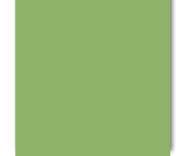A-C
alectorioid lichen: Pendulous hairlike lichens, typically
yellowish, greenish, or brownish; also known as "forage lichens."
See examples.
bryophyte:
A member of the plant order Bryophyta, including the mosses, liverworts,
and hornworts. See examples.
canopy: The aboveground plant organs within a
community. This term is applied to a collection of plants rather
than individual plants (see "crown").
crown: aboveground parts of a tree or shrub,
sometimes more particularly applied to the topmost leaves and
limbs.
community:
The collection of organisms included in a sampling unit (plot,
quadrat, stand, etc.). This is the community in the concrete sense.
Some ecologists apply it in an abstract sense as a recurrent association
of organisms.
crustose: A crust-like growth form that
is closely attached to the substrate, like paint, generally adhering
by all of the lower surface and lacking a lower cortex and rhizines.
cyanolichen:
A lichen containing cyanobacteria. The cyanobacteria may be the
primary photosynthetic partner, or sequestered in special structures
as a secondary photosynthetic partner. See
examples.
D-G
emergent: An individual tree growing higher than
all (or virtually all, if in a clump) others in its vicinity within
a forest, so that its crown rises markedly above the adjacent
overstory.
epiphyte: A plant, fungus, or microbe sustained
entirely by nutrients and water received nonparasitically from
within the canopy in which it resides.
epiphyte mat: A carpet-like aggregation of canopy plants
along with associated suspended soils and debris. Also called
a "moss mat" when mosses dominate.
FEMAT:
Forest Ecosystem Management Assessment Team. This was the group
responsible for producing the first Northwest Forest Plan in 1993.
See reference.
FHM:
Forest Health Monitoring. An interagency program concerned with
monitoring regional forest health in all forested areas in the
United States. Currently the program is administered under the
Forest Inventory and Analysis program (FIA) of the U. S. Forest
Service. See McCune (2000) and
the website for a summary
of the use of epiphytic lichens in this program.
foliose: A lichen growth form with dorsiventral
lobes (having upper and lower surfaces), usually loosely to tightly
appressed to the substrate, 2-dimensional or weakly 3-D.
forage lichens: Pendulous hairlike lichens, typically
yellowish, greenish, or brownish; commonly consumed by mammals,
such as deer (hence "forage"); also known as "alectorioid
lichens." See examples.
fruticose: A 3-dimensional growth form of a lichen,
not differentiated into upper and lower surfaces, and including
pendulous and stringy, upright, or bushy forms.
gap: A space in a canopy created by the partial
or whole death of a plant.
green algal lichen: A lichen having green algae as its photosynthetic
partner.
green-tree retention: A forest cutting method that leaves a
sizable fraction of the living overstory trees. Typically 10-40%
of the overstory canopy is not cut.
H-K
hardwood gap: A gap in the canopy of a primarily coniferous
forest that is filled with hardwood trees or shrubs.
Heritage Program: The Natural Heritage Program in the United
States is initially a collaborative effort of The Nature Conservancy
and individual states to preserve the natural heritage of the
country. Many states have fully adopted the programs. The program
focuses on elements (ecosystems or individual species) needing
protection.
host (or host
plant): Any plant on or
in which another species resides. ("Phorophyte" is an
often seen but awkward and unnecessary word for the host of an
epiphyte.)
interception
loss: The part of the precipitation
falling on vegetation that does not reach the ground, including
water evaporated from or absorbed within the canopy.
L-N
lichen:
An obligate mutualistic association between a fungus and a photosynthetic
partner (either green algae, cyanobacteria, or both).
liverwort:
A bryophyte belonging to the class Hepaticae. These are primitive
photosynthetic plants. Liverworts have one of two forms: thalloid
liverworts are strap-shaped while leafy liverworts have a "stem-and-leaf"
form similar to mosses.
matrix lichen: A macrolichen species with a green-algal
photosynthetic partner and not a forage lichen. This catch-all
category is sometimes referred to as "other" macrolichens.
Most matrix lichens are widespread in PNW forests and occur frequently
in both young and old forests.
moss:
A bryophyte belonging to the class Musci. These are primitive
photosynthetic plants. Mosses have a "stem-and-leaf"
form when viewed closely. See examples.
moss mat: An epiphyte mat dominated by mosses.
mutualism: An association or interaction between different species of
organisms where both partners benefit from the association.
O-R
old-growth associate: A species that is most frequent in old-growth
forests.
old-growth forests: Forests that have persisted for centuries
without stand-replacing disturbances. These typically have old
trees, uneven-aged, multi-layered overstories, and abundant coarse
woody debris. This term is defined more precisely in many different
ways depending on the purpose; there is no universally agreed-upon
definition.
overstory: The stratum of trees that have outgrown
the other vegetation in a forest to have their uppermost crown
foliage largely or fully in direct sunlight, usually as a relatively
continuous layer (excluding gaps).
parasite: A plant, fungus, or microbe that actively
extracts nutrients or water from live host plant tissues, typically
by means of intrusive organs or by living internally. (Of course
animals may be parasitized or parasites too.)
pin lichens:
Lichens whose reproductive structures resemble a minute pin and
pinhead, usually less than 4 mm tall. Most pin lichens grow on
bark and wood in sheltered, humid microsites, such as on the lower
side of leaning tree trunks.
remnant tree: A trees surviving a disturbance that removes
most of the trees in a stand. The term can be applied either to
natural disturbances (usually fire) or human-caused disturbances
(cutting).
riparian:
The strip of habitat along streams or lakes, and presumably influenced
by those bodies of water. Various more precise definitions have
been used, but not agreed upon.
ROD:
Record of Decision. The formal document that in 1994 adopted the
Northwest Forest Plan. See reference.
S-V
S&M species: Survey-and-manage species. Species in
the Pacific Northwest of the United States that are to be surveyed
for and/or managed under the Northwest Forest Plan, as specified
in the Record of Decision.
snag: A standing dead tree trunk and any attached
branches.
trunk: A single, erect, columnar, often woody
plant axis of substantial height.
understory: The stratum of trees that (barring gaps)
lies in the shade immediately below the overstory. Also loosely
applied to all woody strata below the overstory.
W-Z
wolf tree:
A tree with large living lower branches, resulting from growing
in the open (without close competitors) or growing adjacent to
canopy gaps or permanent openings in the forest.





